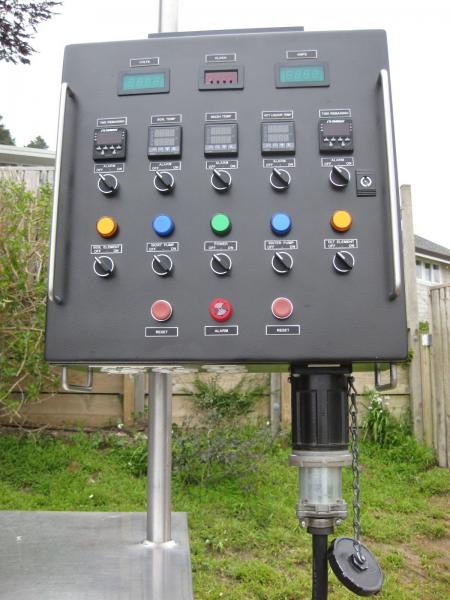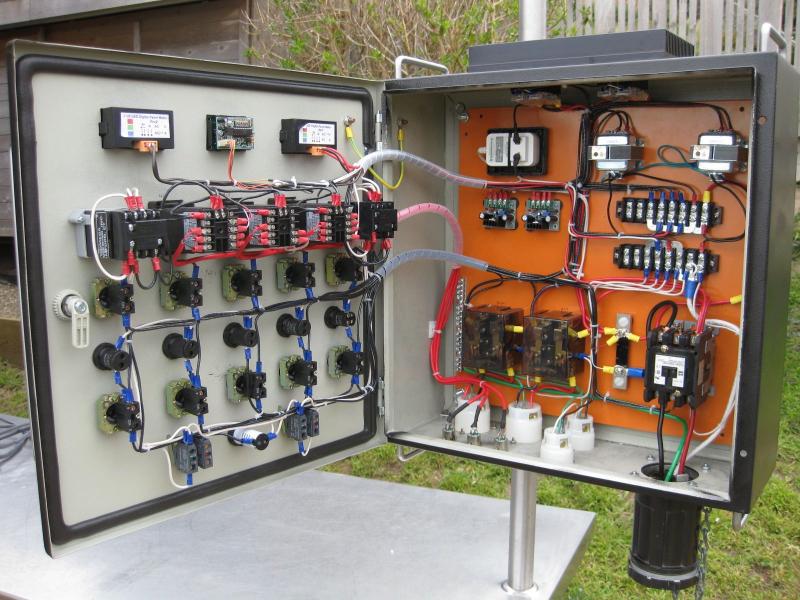Could somebody explain to me the way the emergency off switch works in the diagram by P-J? if it is being fed 120 VAC, and the switch is closed, wouldnt that cause (120/2000)A to be drawn through those resistors to ground? .06A is what i get which would not blow the fuse but would cause 7.2 watts to dissapate across the two 1kohm, 1 watt resistors. Wouldnt this overheat those two resistors?
Or is it a non-issue becasue the current will only run through that line momentarily until the breaker trips?
In the foot notes of the diagram:
Which will only happen for a few milliseconds while the GFCI trips. It is exactly the same as if you press the test button on the GFCI breaker. BTW: at 0.06A of power that is drawn (7.2 watts), do you really think a few milliseconds of that power draw would harm a pair of 1W resistors? Really???EPO - wired to trip GFCI main circuit breaker with small leakage current. ( 0.06A)
I guess I should quit making diagrams anymore for the brew community.
...
Edit: (deleted) - Nevermind. I will only come out to be understood the wrong way.!







